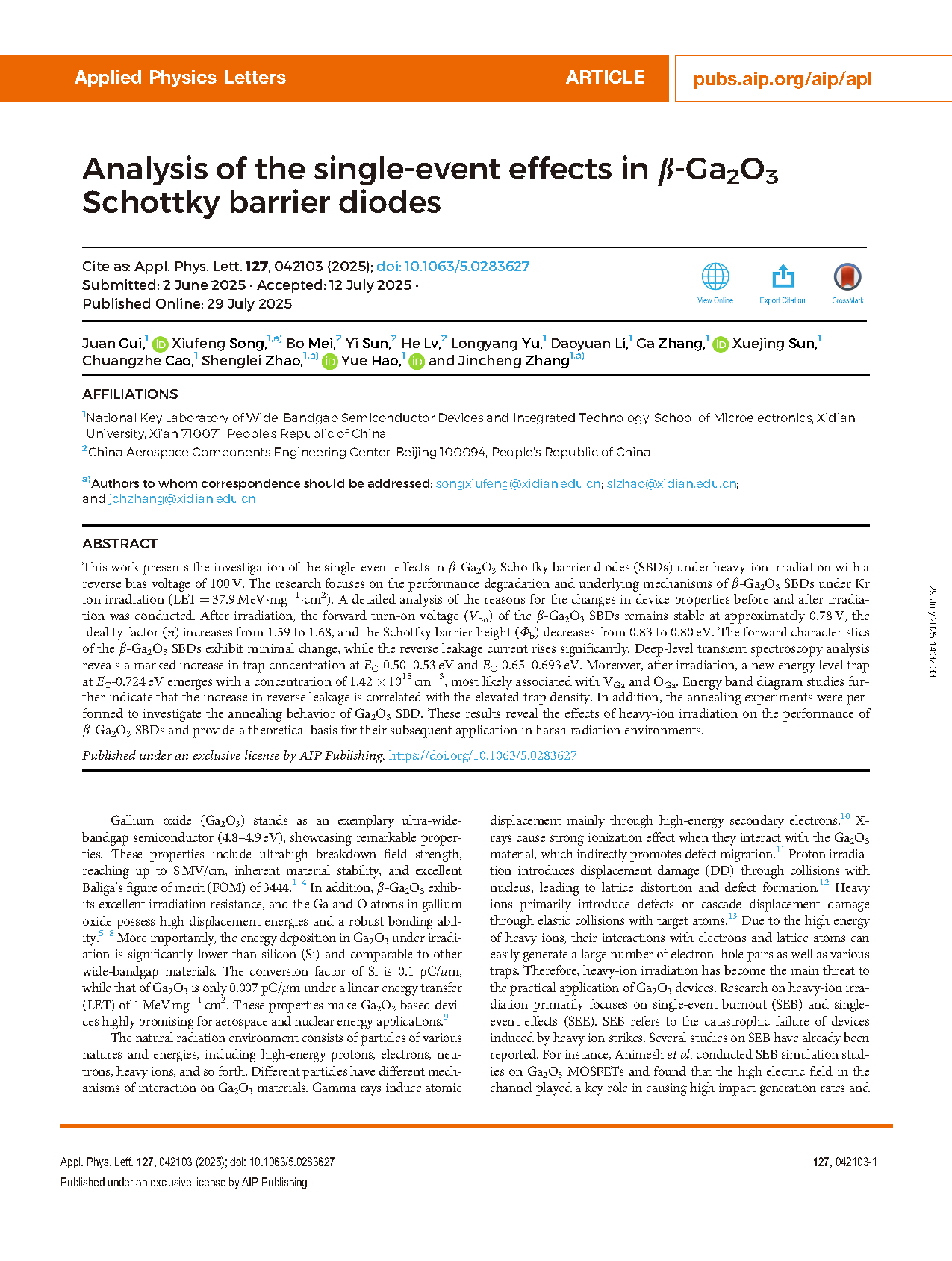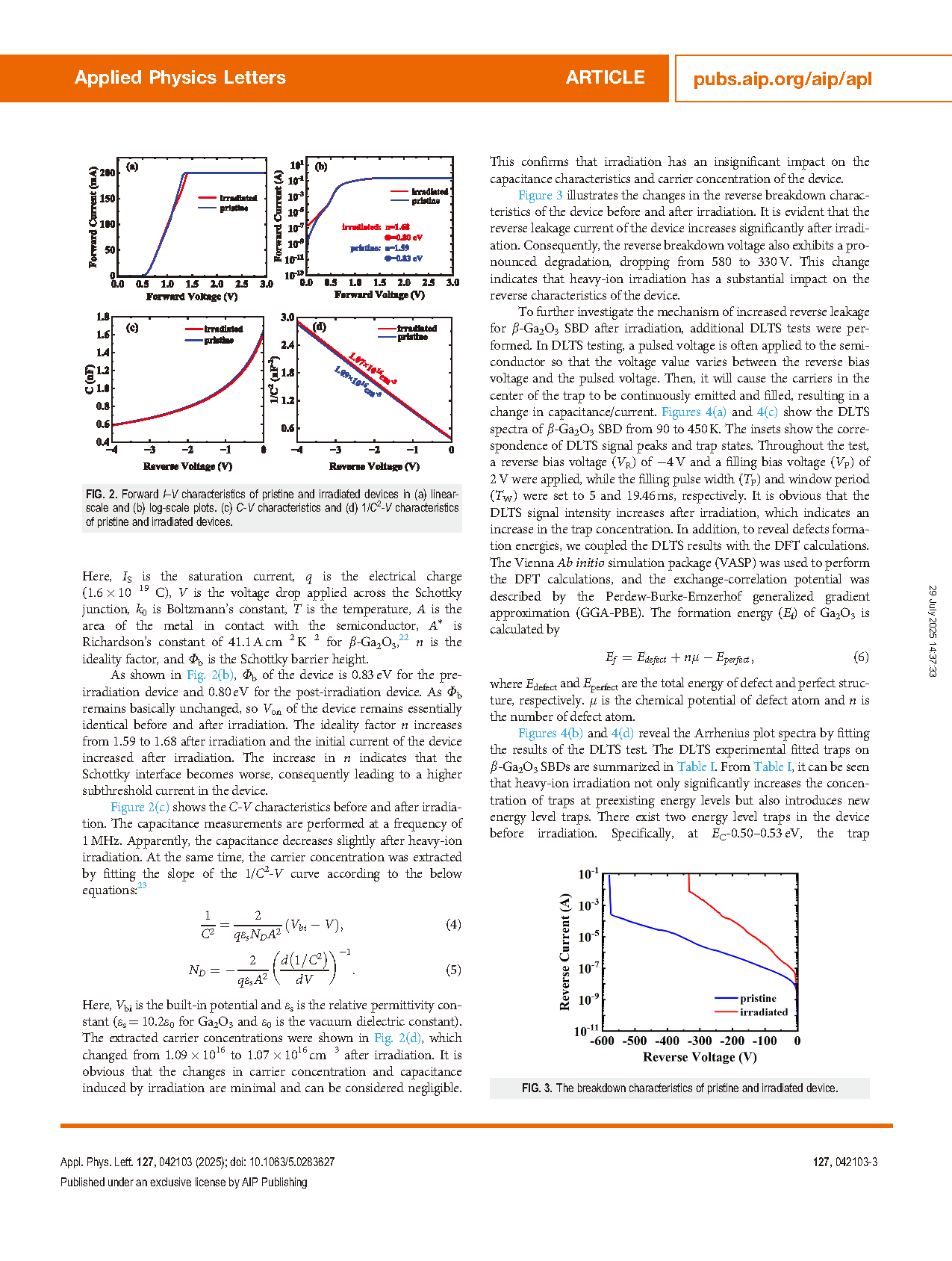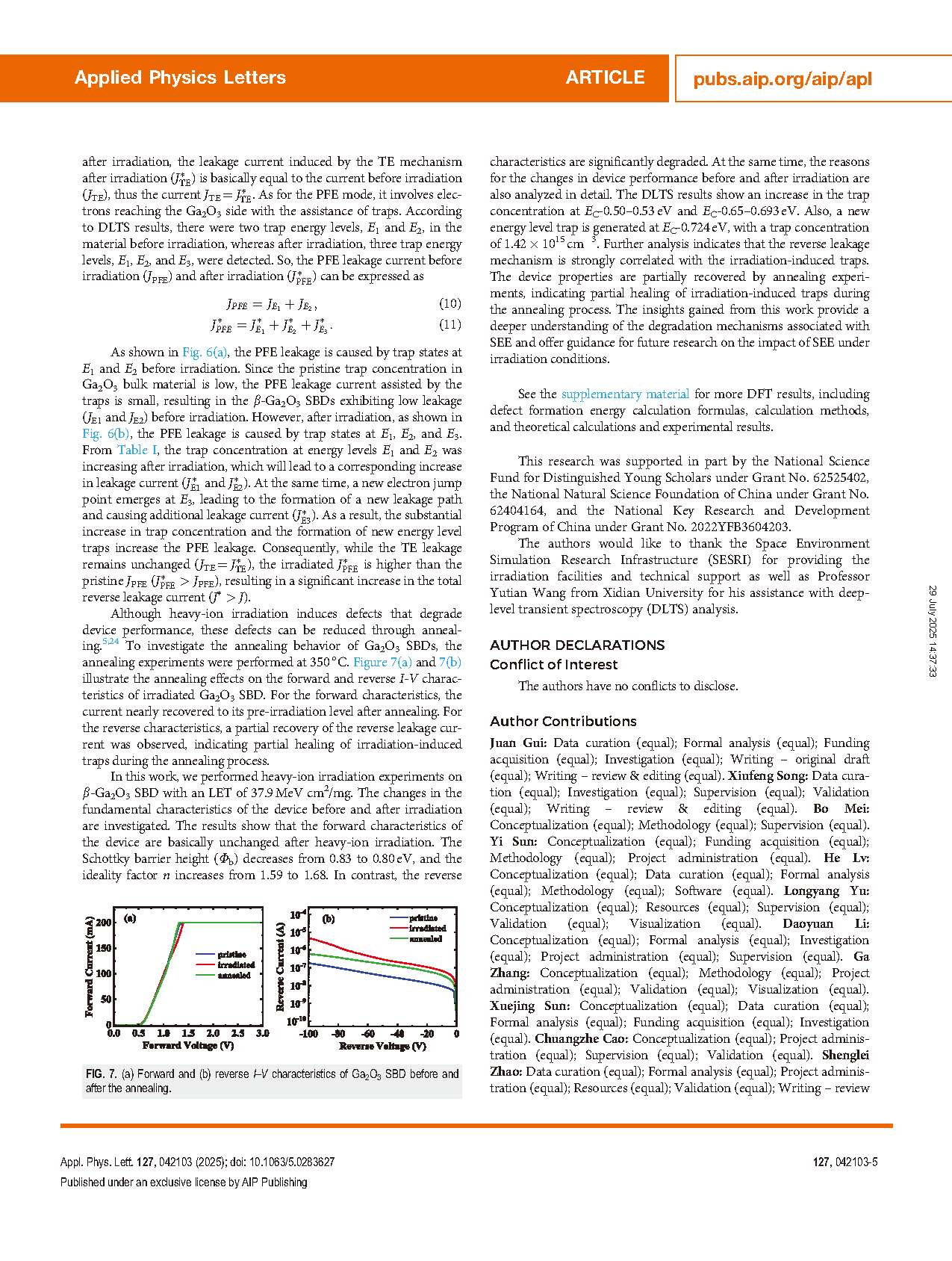

【Member Papers】Xidian University–Academician Yue Hao and Prof. Jincheng Zhang’s Team: Analysis of the Single-Event Effects in β-Ga₂O₃ Schottky Barrier Diodes
日期:2025-08-07阅读:272
A research team from the National Key Laboratory of Wide-Bandgap Semiconductor Devices and Integrated Technology at Xidian University has published a paper titled "Analysis of the Single-Event Effects in β-Ga₂O₃ Schottky Barrier Diodes" in the journal Applied Physics Letters. The team is led by Academician Yue Hao. The group has been recognized as a National Defense Innovation Team, a “Huang Danian-style” teaching team, and an Excellent Innovation Team of Xidian University. The corresponding authors of the paper are Prof. Jincheng Zhang, Prof. Shenglei Zhao, and Assistant Researcher Xiufeng Song. The first author is Master’s student Juan Gui.
Background
β-Ga₂O₃ is an emerging ultra-wide bandgap semiconductor (4.8–4.9 eV) known for its extremely high breakdown electric field (>8 MV/cm), excellent thermal stability, and outstanding Baliga figure of merit. These features make it a promising candidate for high-power electronics and radiation-tolerant applications. In radiation-intense environments such as space and nuclear facilities, the material's resistance to high-energy particles—particularly heavy ions—is critical. Although previous studies have explored Ga₂O₃'s response to various particle types (e.g., X-rays, gamma rays, protons), systematic investigation of its behavior under high-energy heavy-ion irradiation, especially under biased operating conditions, remains scarce. This has left a significant gap in understanding the reliability of Ga₂O₃-based devices in extreme radiation environments, necessitating further in-depth experimental and mechanistic studies.
Abstract
This study investigates the single-event effects (SEE) in vertical β-Ga₂O₃ Schottky barrier diodes (SBDs) under heavy-ion irradiation. The devices were irradiated with Kr ions (LET = 37.9 MeV·mg⁻¹·cm²) while subjected to a reverse bias of 100 V. The authors measured changes in the forward and reverse I-V characteristics and C-V profiles before and after irradiation. Deep-level transient spectroscopy (DLTS) was employed to capture irradiation-induced trap states, and the performance degradation was interpreted from a microscopic physical perspective, shedding light on the underlying degradation mechanisms.
Highlights
● First systematic SEE study under high LET and biased operation
This work is the first to investigate β-Ga₂O₃ SBDs under high-LET (37.9 MeV·mg⁻¹·cm²) heavy-ion irradiation with a realistic operating reverse bias (100 V), filling a key research gap and providing more representative data for space applications.
● DLTS Reveals Characteristics of Radiation-Induced Defects
Deep-level transient spectroscopy (DLTS) analysis reveals a significant increase in the concentration of pre-existing defect levels (E₁: EC–0.50 eV, E₂: EC–0.65 eV) induced by irradiation, along with the emergence of a new trap level (E₃: EC–0.724 eV). These findings enable the construction of a microscopic degradation pathway linking irradiation
● Establishment of a Poole–Frenkel emission (PFE)-dominated leakage model
A physical model was developed to explain enhanced reverse leakage current through PFE mechanisms assisted by radiation-induced trap states, offering new insight into Ga₂O₃ SBD degradation under SEE conditions.
Conclusion
Under high-energy Kr ion irradiation, the forward conduction characteristics of the β-Ga₂O₃ SBD remain largely stable, while its reverse characteristics degrade significantly, manifested by a pronounced in reverse leakage current. DLTS results show that irradiation not only increases the concentration of pre-existing traps (EC-0.50–0.53 eV and EC-0.65–0.693 eV), but also induces increase a new trap level at EC-0.724 eV. These trap states substantially enhance the Poole–Frenkel emission PFE mechanism, leading to an overall rise in reverse leakage current.
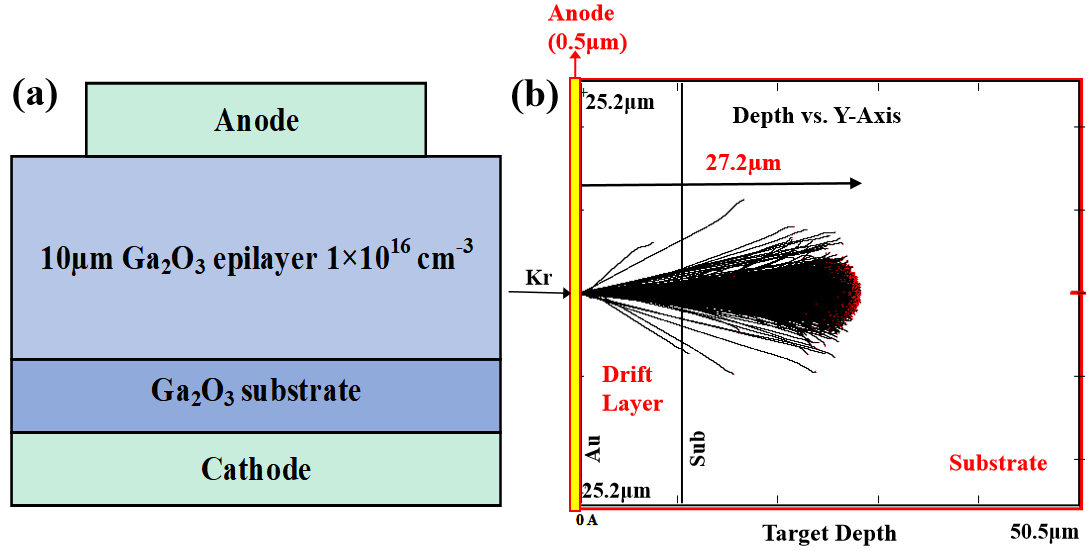
Fig. 1. (a) Schematic of the vertical β-Ga₂O₃ Schottky barrier diode (SBD). (b) Simulated damage profile caused by Kr ion irradiation in the β-Ga₂O₃ SBD.
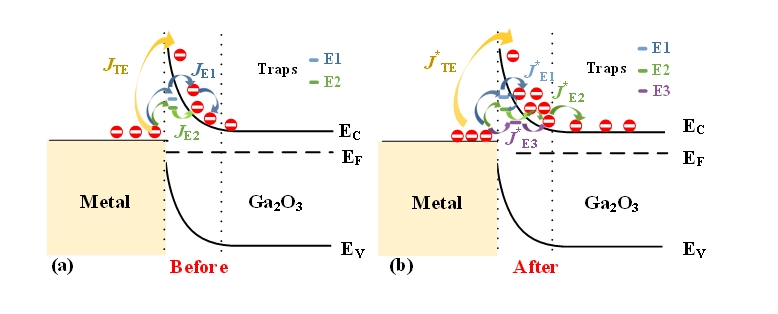
Fig. 2. (a) Energy band diagram of the pristine device. (b) Energy band diagram of the irradiated device showing enhanced trap-assisted leakage.
DOI:
doi.org/10.1063/5.0283627
